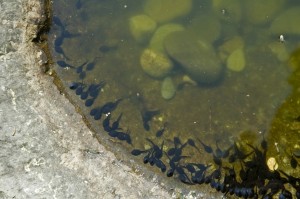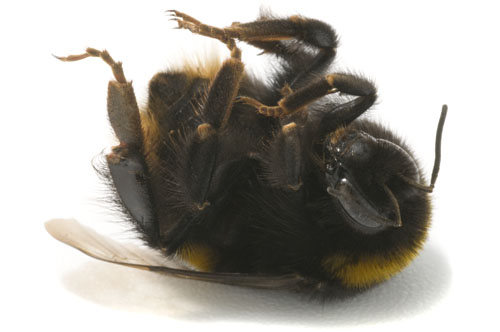17
Apr
Ohio’s Cuyahoga County Bans Most Toxic Pesticide Use on County Property
(Beyond Pesticides, April 17, 2012) Last week, Ohio’s Cuyahoga County Council voted to limit the use of chemical insecticides, weed killers and other pesticides on county property. According to the Cleveland Plain Dealer, the restrictions will apply to the county’s 66 buildings, their lawns and the wide swaths of open space at Whiskey Island and the Cuyahoga County Airport. In describing the ordinance Councilman Julian Rogers said, “[County pest managers] have to focus on using techniques that will specifically target the pests they’re looking to eliminate and will have the least amount of impact to other organisms, including humans.” Cuyahoga County is Ohio’s most populous county.
“This is a watershed ordinance, certainly for the state of Ohio,” said Barry Zucker, executive director of Beyond Pesticides Ohio and long-time advocate for this type of county-wide ordinance. “This is a terrific achievement and a tremendous model for other communities in Ohio and the rest of the nation.”
People in the county have long recognized the dangers posed by pesticides and the availability of viable alternatives. Under the leadership of Beyond Pesticides Ohio, the town of Cleveland Heights became the first municipality in the nation to legislatively prohibit the application of lawn chemicals on city property, including schools and day care centers. The group also worked with the town of Lyndhurst, Ohio and helped pass legislation prohibiting the Cuyahoga County Board of Health from doing any broadcast spraying of pesticides to control mosquitoes, instead relying on education, prevention, and larval control with great success. In 2010, Beyond Pesticides Ohio joined with Beyond Pesticides and the Case Western University School of Medicine’s Swetland Center for Environmental Health to host Greening the Community, the 28th National Pesticide Forum, which focused on green communities and economies.
While the seeds for the ordinance were originally planted at the Greening the Community Forum, Mr. Zucker explains that the momentum really picked up a year later when Beyond Pesticides’ board member and national organic turf expert Chip Osborne returned to Cleveland as a keynote speaker at an April 2011 conference organized by Beyond Pesticides Ohio and the Cleveland Botanical Garden. After attending Mr. Osborne’s talk, “Fabulous Lawns and Landscapes: Transitioning to cost effective, organic landscape management,” County Council members Sunny Simon and Julian Rogers approached Beyond Pesticides Ohio about the county ordinance. Mr. Zucker, his group and allies worked with the Council over the past year leading up to its April 10, 2012 passage.
“I think it’s fantastic, and I think it’s landmark, too,” Mr. Zucker told the Cleveland Plain Dealer. “This is the direction turf care is going, for health reasons, for pets, the environment. Lots of times pesticides will leach into the water system and provide a whole host of other problems.”
Of 30 commonly used lawn pesticides, 19 are linked with cancer or carcinogencity, 13 are linked with birth defects, 21 with reproductive effects, 26 with liver or kidney damage, 15 with neurotoxicity, and 11 with disruption of the endocrine (hormonal) system. Of those same 30 lawn pesticides, 17 are detected in groundwater, 23 have the ability to leach into drinking water sources, 24 are toxic to fish and other aquatic organisms vital to our ecosystem, 11 are toxic to bees, and 16 are toxic to birds. Organic land management is practical and economical. Opponents may claim that organic management will put the fields at risk for disease and weed infestation, however, in a Cornell University study of turf, chemically maintained turf is more susceptible to disease. Another report prepared by Grassroots Environmental Education and Mr. Osborne for the New York State legislature, concludes that organic approaches can save money. The report compares the relative costs of maintaining a typical high school football field using a chemical-intensive program and an organic program over a five-year period and finds that the annual cost of maintaining an organic field can be as much as 25% lower than the cost of chemical-based programs.
For more information on organic-based, pesticide-free lawn and landscape management, see Beyond Pesticides Lawns and Landscapes program page.
All unattributed positions and opinions in this piece are those of Beyond Pesticides.














 (Beyond Pesticides, April 3, 2012) Last week, the journal
(Beyond Pesticides, April 3, 2012) Last week, the journal  (Beyond Pesticides, March 30, 2012) Healthy Communities: the
(Beyond Pesticides, March 30, 2012) Healthy Communities: the 


